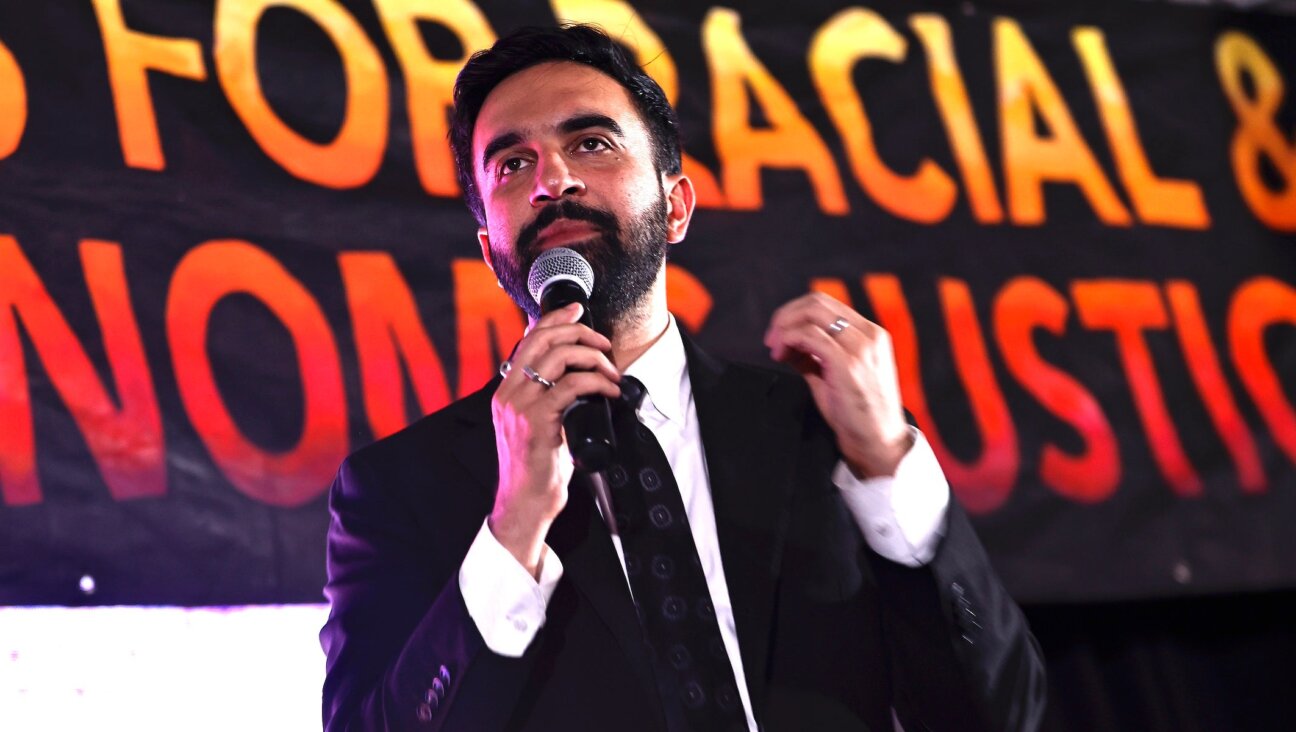The Science of Torah-Chanting
Chanting the Hebrew Bible: The Art of Cantillation
By Joshua R. Jacobson
Jewish Publication Society, 965 pages, $75.
* * *|
Reviewing Joshua Jacobson’s encyclopedic new “Chanting the Hebrew Bible” is akin to summarizing the Torah while standing on one foot. Cantillation — which comes from the Latin cantare, to sing –– is a system in which natural inflections of speech have been heightened, stylized and frozen for the sake of a uniform ritual practice. Chanting Scripture in a liturgical service indicates the distinction between a secular and a sacred reading.
Jacobson, the conductor of the acclaimed Boston-based Zamir Chorale, has been Torah chanting since he was 10 years old and imagined he knew all there was to know on this subject. He assumed, like many professionals, that the way one chanted the Torah melodies was an aesthetic choice. “There didn’t seem to be any consistency,” he told the Forward during an interview. But that all changed when he began studying the works of Israeli author Michael Perlman and other writers. When a friend approached Jacobson a decade ago, suggesting he write a short pamphlet on cantillation, he shrugged it off, replying that he was a musician but certainly not an expert on cantillation. Six years, several sabbatical grants, a thousand pages and much fundraising later, Jacobson has delivered an indispensable teaching tool that, quite unusually, is a genuinely fascinating read. Its first run of 1,000 copies sold out almost immediately.
“There’s nothing like it out there,” said Jacobson. “I purposely devoted a hundred pages to Hebrew pronunciation. Vowels and syllabic stress are the most common mistakes made. Most other books don’t deal with either the pace at which you chant or the rhythm.”
As he began researching the subject, Jacobson realized that “the key to the whole system of cantillation was syntax, or sentence structure. The te’amim [punctuation marks] serve as an elaborate system that clarifies ambiguities in meaning.” A valuable series of books approaching cantillation from different points of view by Perlman helped clarify his ideas. Armed with his new understanding of the importance of syntax, Jacobson began lecturing on the subject at Hebrew College and around the country in the 1980s and 1990s and found that “even cantors were dumbfounded.”
One of the awkward side effects of becoming an expert in the art or science of cantillation is realizing, usually during services, how many people — rabbis and cantors alike — get it wrong. “If you are pausing in the wrong places, or joining two words which shouldn’t be put together, you are perverting the text,” Jacobson explained. “If you know the rules, you can do a convincing rendering of the text. It’s a system that can make the words come alive.”
Even Israelis, who approach the subject of reading Torah with swaggering confidence, often do not realize how radically biblical Hebrew can differ from its modern incarnation. Many biblical words and word forms, names and verb forms have simply dropped into extinction.
Jacobson said that we can be “fairly certain that in ancient Israel sacred texts were chanted, not merely spoken. People, in theory, had memorized the Bible.” Medieval Jewish sources ascribed a divine origin to cantillation, believing that after Moses heard the voice of God chanting the Torah at Sinai, he began the process of oral transmission that continued until generations later when it was put into writing. Jacobson gives many reasons why Scripture is chanted, rather than read, beginning with the rabbinic injunction in the Babylonian Talmud not to read without a melody. In many traditional Jewish sources, musical talent was perceived as both a gift from God and a superior means of communication with God, the “Master of the Ultimate Music,” as the Italian Rabbi Judah Moscato wrote in 1585.
The reading of liturgical “lessons” from the Bible was, Jacobson writes, an exclusively oral tradition until some time between the sixth and eighth centuries C.E., when notation systems were developed for transcribing both te’amim and nikudot (vowels added to the text’s consonants). Three different systems germinated simultaneously: the Babylonian, developed in the academies of the Eastern Diaspora; the Palestinian, developed in Jerusalem, and the Tiberian, developed in the late eighth century by a school of rabbis in Tiberias, near the Sea of Galilee. Tiberias, Jacobson informs us, “came up with the winning system. Tradition-bound Jews across the world accept the authenticity of the ta’amey ha’mikra (system of punctuation) as they were codified in Tiberias by Ben-Asher 1,000 years ago.”
Chanting the Bible was an ideal way of intensifying the emotional and dramatic impact of words, and, writes Jacobson, “the te’amim (punctuation) served to flesh out the bare bones of the scriptural text with an element of expressivity.”
Melodies, as those who have studied Mishna know, help one memorize a text, while sustained pitch helps amplify a speaker’s voice, crucial when Torah is read to large assemblies. Jacobson notes that by the time the New Testament was being written in the late first century C.E., the practice of chanting the Torah in public was already considered to be an ancient institution.
Some 800 pages serve as a textbook, along with a CD replete with detailed instructions and 87 musical examples. A helpful glossary follows instructions on the chanting of Haftarah, the Song of Songs, Ruth and Esther, Lamentations and the High Holiday morning service.
Even those who consider themselves experts will learn a lot from this book. For those with no expectations or desire to ever be able to chant in public, Jacobson consistently provides a wealth of interesting historical material to make this a great reference book. For those who wonder just what those mysterious marks they remember from their bar or bat mitzvahs meant, this is a great place to find out.
Susan Miron is a harpist and a contributor to the Forward.














